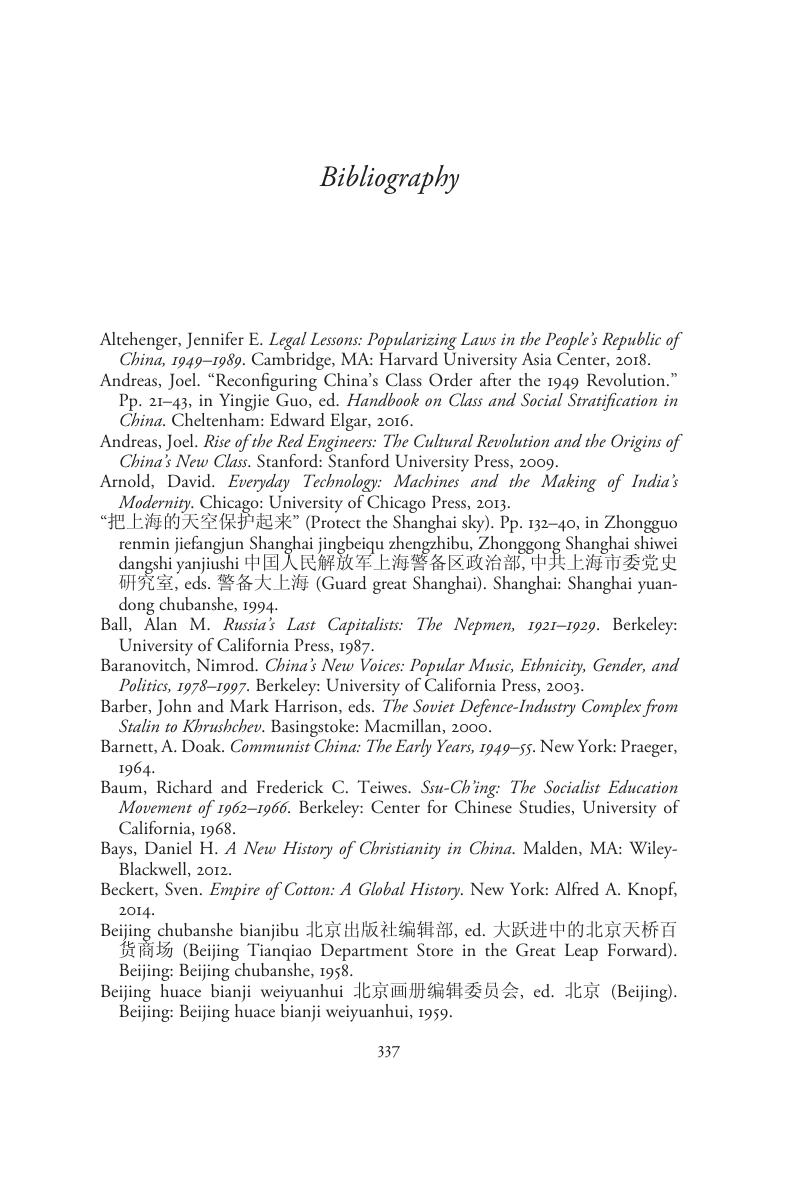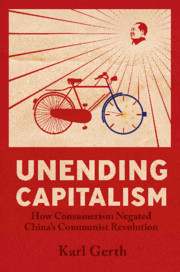Book contents
- Unending Capitalism
- Unending Capitalism
- Copyright page
- Contents
- Figures
- Acknowledgments
- Abbreviations
- Introduction
- Chapter 1 Self-Expanding and Compulsory Consumerism
- Chapter 2 Building State Capitalism Across 1949
- Chapter 3 Soviet Influences on State Consumerism
- Chapter 4 State Consumerism in Advertising, Posters, and Films
- Chapter 5 State Consumerism in the Service Sector
- Chapter 6 Consumerism in the Cultural Revolution
- Chapter 7 The Mao Badge Phenomenon as Consumer Fad
- Afterword
- Notes
- Bibliography
- Index
- References
Bibliography
Published online by Cambridge University Press: 08 May 2020
- Unending Capitalism
- Unending Capitalism
- Copyright page
- Contents
- Figures
- Acknowledgments
- Abbreviations
- Introduction
- Chapter 1 Self-Expanding and Compulsory Consumerism
- Chapter 2 Building State Capitalism Across 1949
- Chapter 3 Soviet Influences on State Consumerism
- Chapter 4 State Consumerism in Advertising, Posters, and Films
- Chapter 5 State Consumerism in the Service Sector
- Chapter 6 Consumerism in the Cultural Revolution
- Chapter 7 The Mao Badge Phenomenon as Consumer Fad
- Afterword
- Notes
- Bibliography
- Index
- References
Summary

- Type
- Chapter
- Information
- Unending CapitalismHow Consumerism Negated China's Communist Revolution, pp. 337 - 372Publisher: Cambridge University PressPrint publication year: 2020



